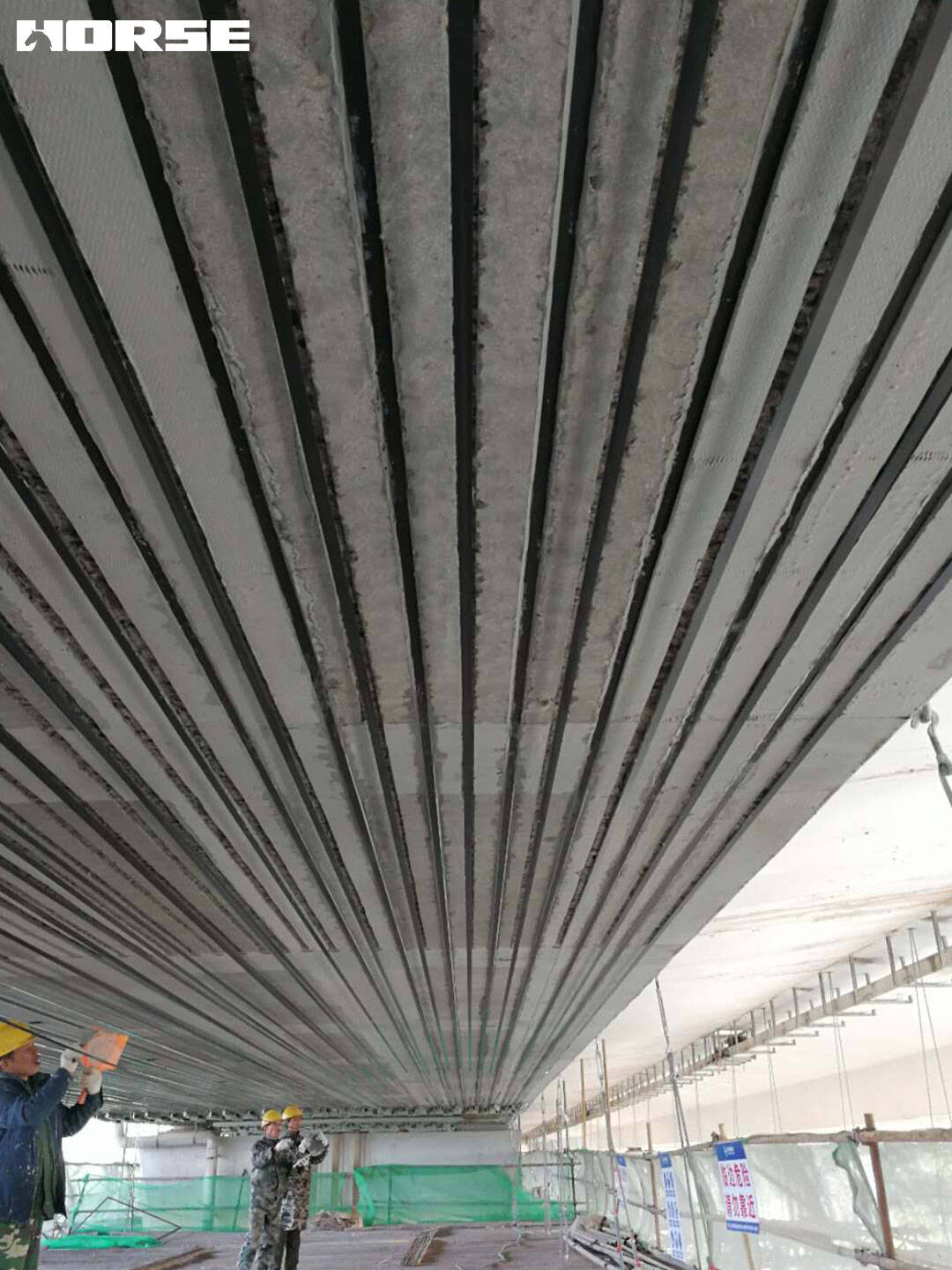Solutions
Horse Construction offers full range of structural strengthening materials with technical supports, documentation supports, products supports, project supports.
Bridge reinforcement using carbon fiber laminate only needs these 7 steps
Many early-built bridges are faced with the situation of being demolished, reconstructed, or reinforced due to many reasons such as improved code standards, improper design and construction, increased loads, aging materials, environmental corrosion, and changes in use functions.
These problems can be solved by using the reinforcement technology of carbon fiber laminate, and then pre-stressing the carbon fiber plate to achieve the purpose of reinforcement.

Pre-stress the carbon fiber laminate to make full use of the high-strength performance of the carbon fiber, and at the same time, it can also improve the bonding stress distribution at the interface between the carbon fiber laminate and the concrete, thereby delaying the carbon fiber peeling and destruction.
The method of applying prestressed on carbon fiber laminate is simple and convenient, and can be completed manually without large machinery. The main steps are as follows:
(1) Tension preparation: personnel division, tension machine and anchor device preparation, carbon fiber laminate cutting.
(2) Measurement and setting out: construction according to design drawings.
(3) Reinforcing bars and installing anchors, tensioning tools and carbon fiber laminate. The depth of rebars should meet the design requirements.
(4) Tensioning of carbon fiber laminate: Tensile carbon fiber laminate is controlled by dual-stress and strain synchronous jacks, and the tensile stress is controlled by an oil pressure gauge. In addition, the tensile stress is controlled by the instrument observation of the change of the resistance strain gauge attached to the surface of the carbon fiber laminate. The carbon fiber laminate is loaded in stages, and the loading force at each stage is 10% of the tensile control stress.
(5) Fix the carbon fiber laminate at the tension end, and use a torque wrench to tighten the bolts according to the design requirements of each bolt.
(6) After the tension is completed, powder 5mm thick adhesive is used as the protective layer of the carbon plate on both sides of the carbon fiber plate (including the carbon fiber plate).
(7) Apply a layer of adhesive to the nuts of the anchor bolts, and then apply a layer of anti-rust grease to the surface of all metal parts, and then install the tension end and the anchor cap of the fixed end.
You can find anything here you are in need of, have a trust trying on these products, you will find the big difference after that.

High strength, unidirectional carbon fiber wrap pre-saturated to form a carbon fiber reinforced polymer (CFRP) wrap used to strengthen structural concrete elements.

High strength carbon fiber reinforced polymer (CFRP) strip / laminate / plate for structural strengthening and concrete repair

Prestressed carbon fiber reinforced polymer(CFRP) plate for slab, beam strengthening to increase stiffness, reduce distortion and deflection of members, reduce the cracks, avoid and stop cracking.